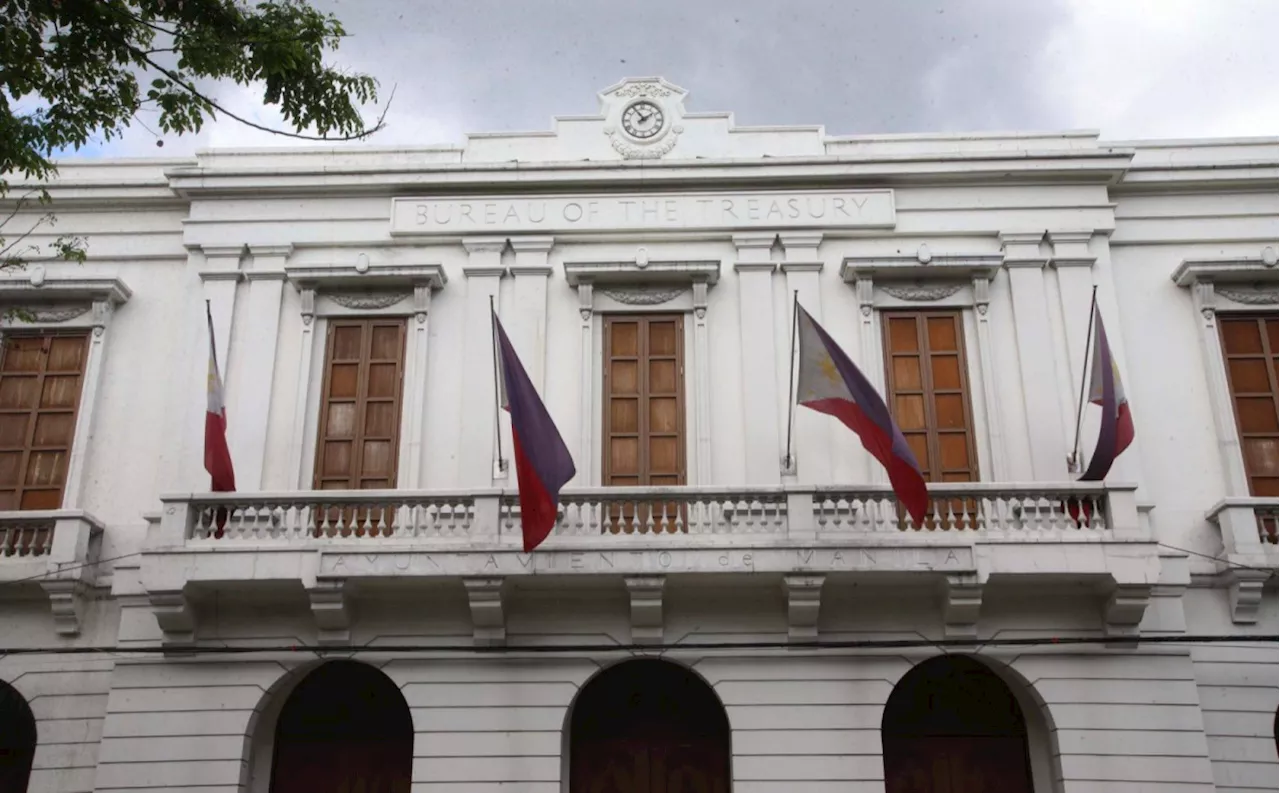The Philippines' national government saw a significant decrease in gross borrowings during November, reflecting a conscious effort to reduce debt. While the national debt reached a record high in October due to a weakening peso, November's figures show a positive trend.
Gross borrowings by the national government decreased in November as it significantly reduced its debt, according to data released by the Bureau of the Treasury . The Treasury 's latest cash operations report showed that gross borrowings plunged by 48.16 percent to P65.05 billion last month from P125.46 billion a year ago. This figure was also considerably lower than the P129.26 billion recorded in October. Year-to-date, gross borrowings amounted to P2.49 trillion, 13.
7 percent higher than the P2.19 trillion reported in the same period of 2023. Domestic debt, which represented the majority of November's gross borrowings at P48.88 billion, was 59.6 percent and 27.5 percent lower than the year-earlier P121.02 billion and the previous month's P67.46 billion, respectively. For the first 11 months of the year, domestic debt totaled P1.91 trillion. Foreign borrowings, on the other hand, were significantly higher at P16.17 billion from P4.44 billion a year earlier. However, this figure was still considerably lower than the P61.8 billion recorded in the previous month. As of the end of November, foreign debt totaled P582.41 billion. The majority of domestic borrowings, or P30 billion, came from fixed-rate Treasury bonds, with an additional P18.88 billion raised from T-bills. Project loans accounted for the largest share of foreign borrowings for the month at P8.7 billion, with another P7.47 billion raised from program loans. Financing for the first 11 months of 2024 totaled P1.26 trillion, 37.3 percent lower than the P1.99 trillion in the same period last year. As of the end of October, the national government's (NG) outstanding debt reached a new record high of P16.02 trillion due to a weaker peso. A total of P126.95 billion was added to the debt tally from September's P15.89 trillion, and the count was also P1.54 trillion higher than the year-earlier P14.48 trillion. Of the total debt stock, 32.02 percent was borrowed abroad while 67.98 percent was sourced domestically. Domestic debt hit P10.89 trillion as of the end of October, lower than the P10.91 trillion recorded in the same period last year.
Philippines National Debt Borrowing Treasury Peso Economy
Philippines Latest News, Philippines Headlines
Similar News:You can also read news stories similar to this one that we have collected from other news sources.
 Philippines Inflation Could Have Increased in November Due to Typhoons, Higher Energy CostsInflation in the Philippines may have edged up in November, driven by a weaker peso, higher energy costs, and increased food prices following typhoons. This comes as close to the Bangko Sentral ng Pilipinas' projections and could prompt further interest rate reductions.
Philippines Inflation Could Have Increased in November Due to Typhoons, Higher Energy CostsInflation in the Philippines may have edged up in November, driven by a weaker peso, higher energy costs, and increased food prices following typhoons. This comes as close to the Bangko Sentral ng Pilipinas' projections and could prompt further interest rate reductions.
Read more »
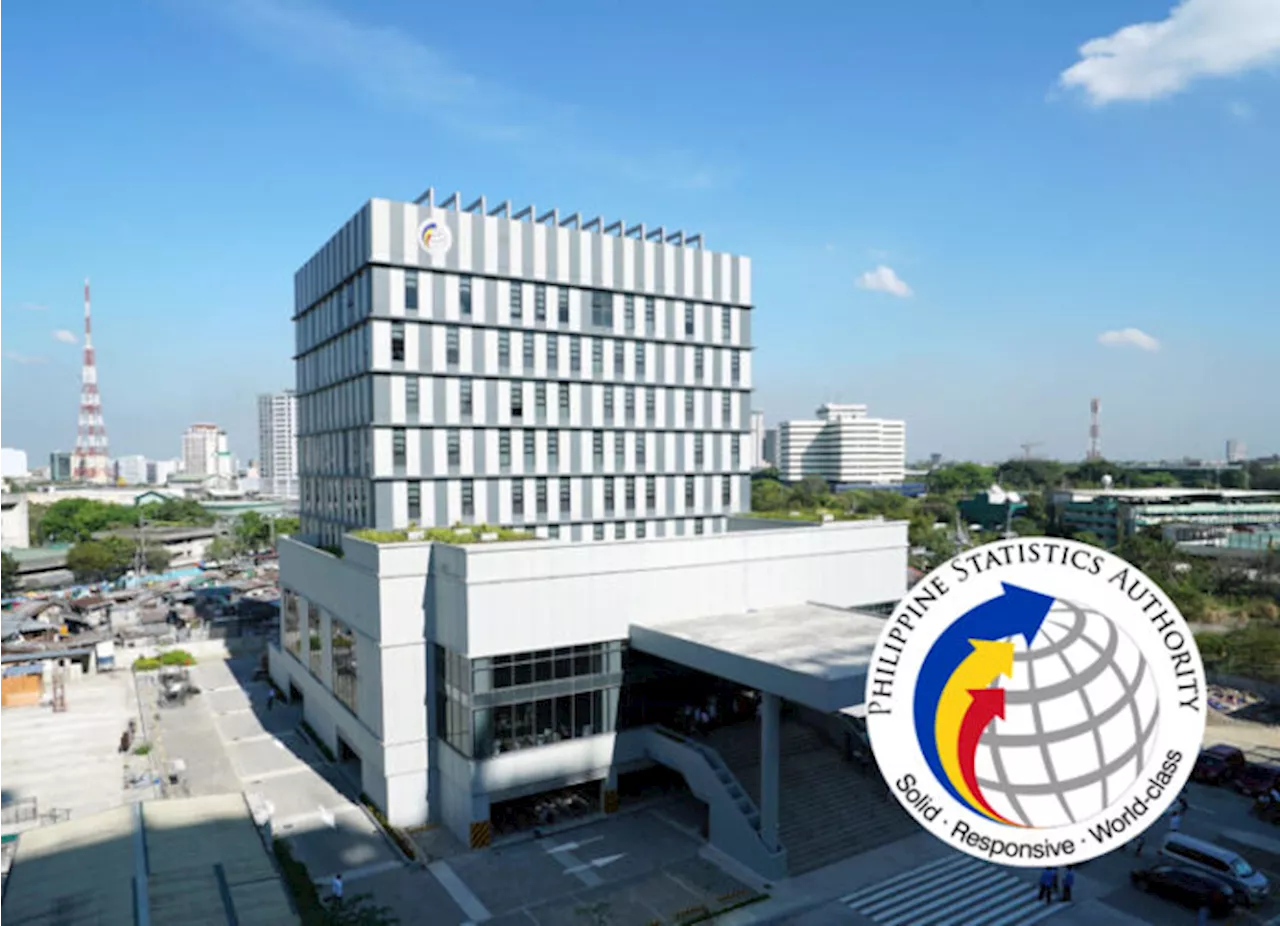 Philippines Inflation Rises to 2.5% in November 2024The country's inflation rate rose to 2.5% in November from 2.3% in October, according to the Philippine Statistics Authority. The increase was driven by higher prices of food and non-alcoholic beverages, yet still within the Bangko Sentral ng Pilipinas' forecast range of 2.2% to 3%. The overall inflation from January to November stood at 3.2%, within the government's target range of 2% to 4%. The central bank expects inflation to trend closer to the lower end of the target range in the near term.
Philippines Inflation Rises to 2.5% in November 2024The country's inflation rate rose to 2.5% in November from 2.3% in October, according to the Philippine Statistics Authority. The increase was driven by higher prices of food and non-alcoholic beverages, yet still within the Bangko Sentral ng Pilipinas' forecast range of 2.2% to 3%. The overall inflation from January to November stood at 3.2%, within the government's target range of 2% to 4%. The central bank expects inflation to trend closer to the lower end of the target range in the near term.
Read more »
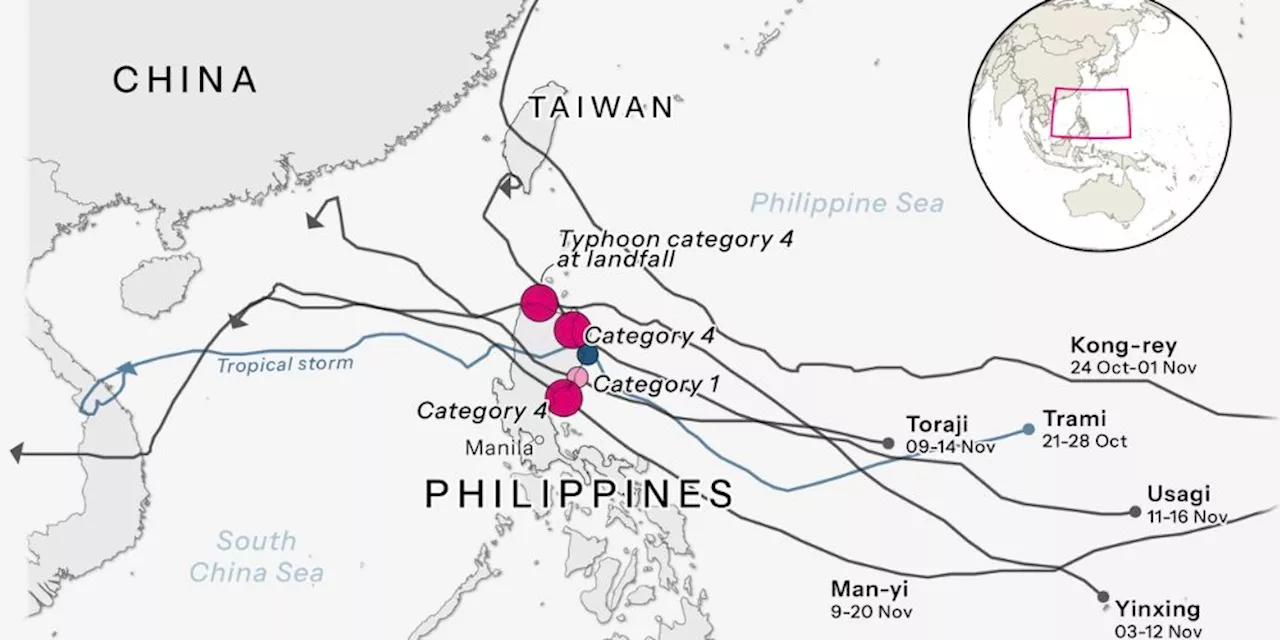 Climate change ‘supercharged’ the parade of typhoons the Philippines experienced in NovemberLatest Philippine news from GMA News and 24 Oras. News, weather updates and livestreaming on Philippine politics, regions, showbiz, lifestyle, science and tech.
Climate change ‘supercharged’ the parade of typhoons the Philippines experienced in NovemberLatest Philippine news from GMA News and 24 Oras. News, weather updates and livestreaming on Philippine politics, regions, showbiz, lifestyle, science and tech.
Read more »
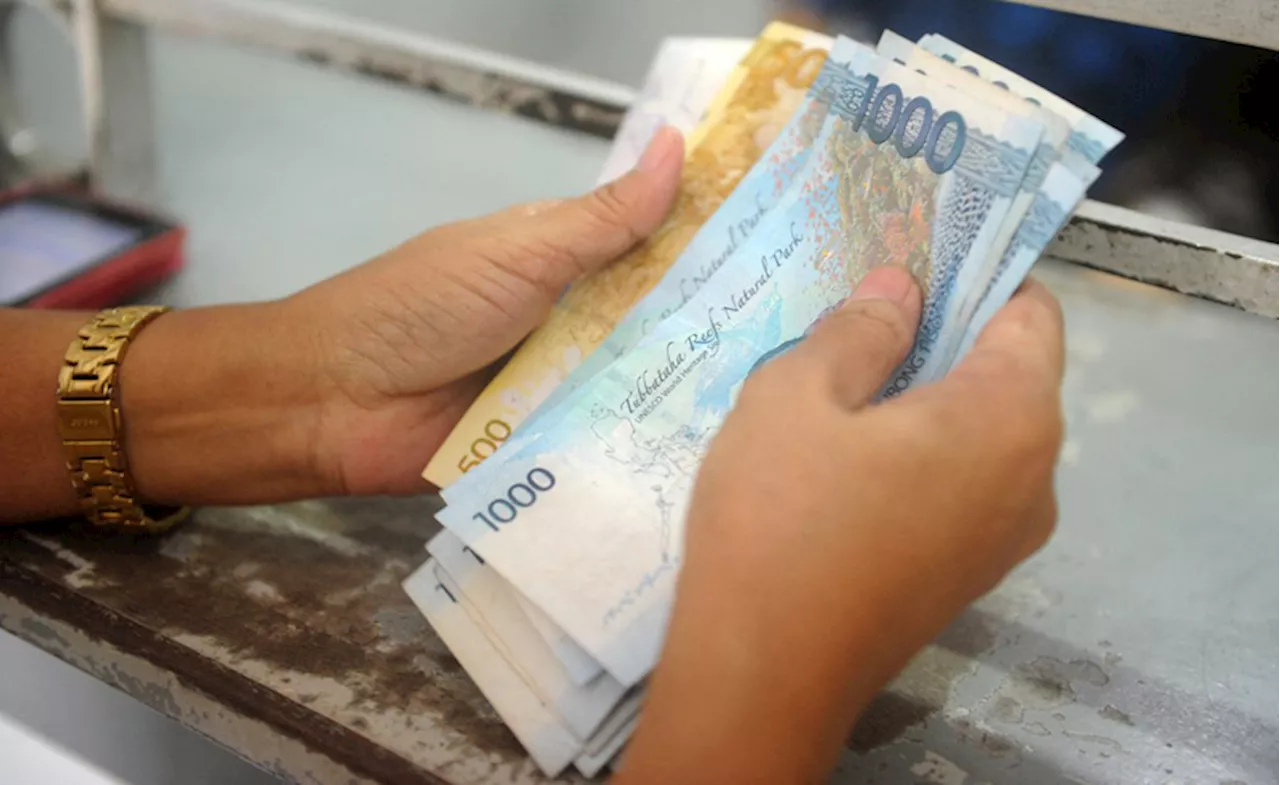 Philippines Posts $2.3 Billion Balance of Payments Deficit in November 2024The Philippines recorded a $2.3 billion balance of payments (BOP) deficit in November 2024, a significant jump from the $216 million deficit in the same month last year. The Bangko Sentral ng Pilipinas (BSP) attributed the deficit to the national government's foreign currency withdrawals to settle debt obligations and expenditures, as well as the BSP's net foreign exchange operations. Despite the November deficit, the cumulative BOP position from January to November 2024 still showed a surplus of $2.1 billion. Lower net receipts from trade in services and government net foreign borrowing contributed to the decline in the cumulative surplus. However, this was partially offset by continued net inflows from personal remittances, foreign portfolio investments, and direct investments. The BOP position resulted in a decrease in the gross international reserves (GIR) to $108.5 billion as of end-November 2024, from $111.1 billion at the end of October 2024. Despite the decrease, the GIR still provides a more than adequate external liquidity buffer equivalent to 7.7 months' worth of imports and payments of services and primary income.
Philippines Posts $2.3 Billion Balance of Payments Deficit in November 2024The Philippines recorded a $2.3 billion balance of payments (BOP) deficit in November 2024, a significant jump from the $216 million deficit in the same month last year. The Bangko Sentral ng Pilipinas (BSP) attributed the deficit to the national government's foreign currency withdrawals to settle debt obligations and expenditures, as well as the BSP's net foreign exchange operations. Despite the November deficit, the cumulative BOP position from January to November 2024 still showed a surplus of $2.1 billion. Lower net receipts from trade in services and government net foreign borrowing contributed to the decline in the cumulative surplus. However, this was partially offset by continued net inflows from personal remittances, foreign portfolio investments, and direct investments. The BOP position resulted in a decrease in the gross international reserves (GIR) to $108.5 billion as of end-November 2024, from $111.1 billion at the end of October 2024. Despite the decrease, the GIR still provides a more than adequate external liquidity buffer equivalent to 7.7 months' worth of imports and payments of services and primary income.
Read more »
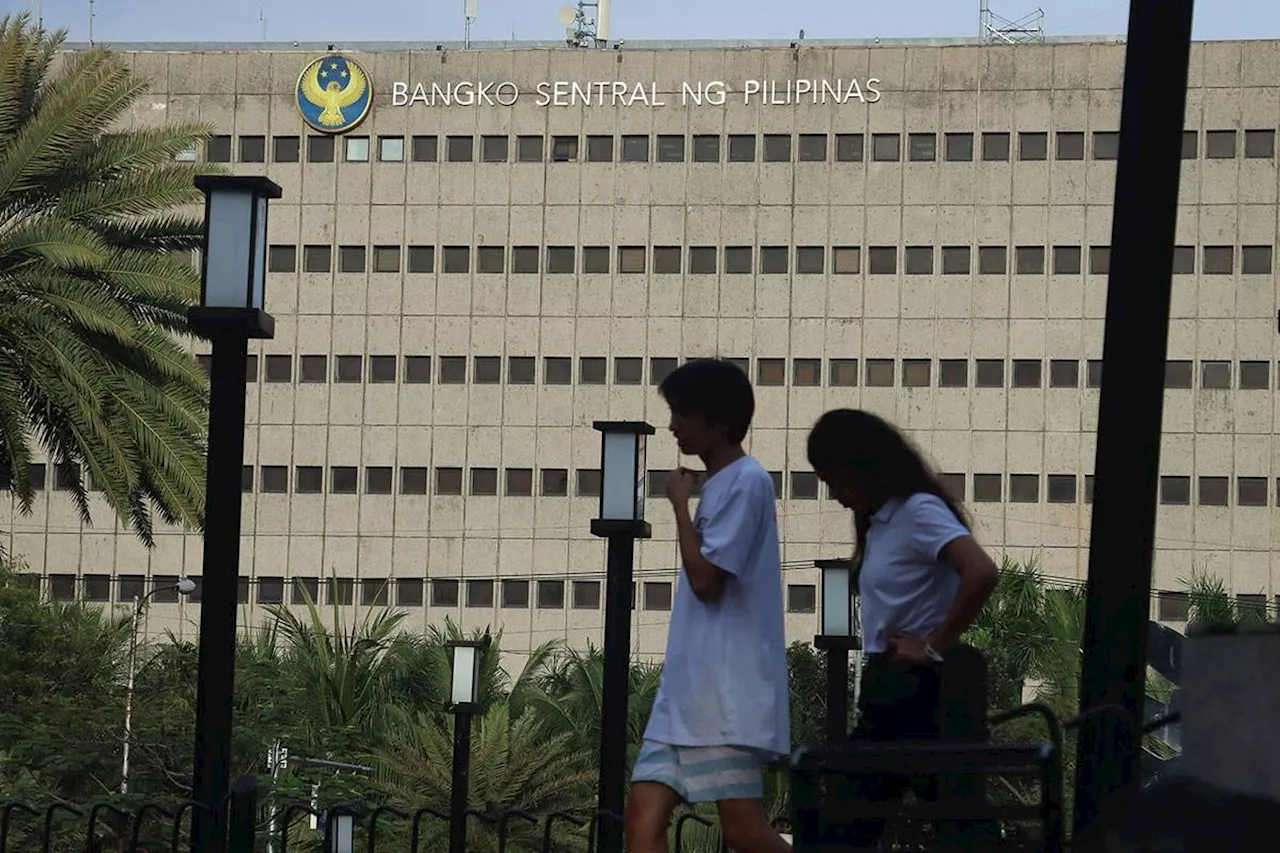 Philippines' Debt Service Burden Rises 16.8% to $12.85 BillionThe Philippines' debt service burden has climbed by 16.8% to $12.85 billion by the end of September 2023, up from $11 billion in the previous year. This increase is driven by higher principal and interest payments on various long-term debts.
Philippines' Debt Service Burden Rises 16.8% to $12.85 BillionThe Philippines' debt service burden has climbed by 16.8% to $12.85 billion by the end of September 2023, up from $11 billion in the previous year. This increase is driven by higher principal and interest payments on various long-term debts.
Read more »
 Debt paper issuances fuel 17.5% external debt hikeDEBT paper issuances of the national government led to a double-digit increase in the country’s external debt, according to the Bangko Sentral ng Pilipinas (BSP). The BSP said the country’s external debt rose to $139.64 billion as of end-September 2024 from the $118.
Debt paper issuances fuel 17.5% external debt hikeDEBT paper issuances of the national government led to a double-digit increase in the country’s external debt, according to the Bangko Sentral ng Pilipinas (BSP). The BSP said the country’s external debt rose to $139.64 billion as of end-September 2024 from the $118.
Read more »
